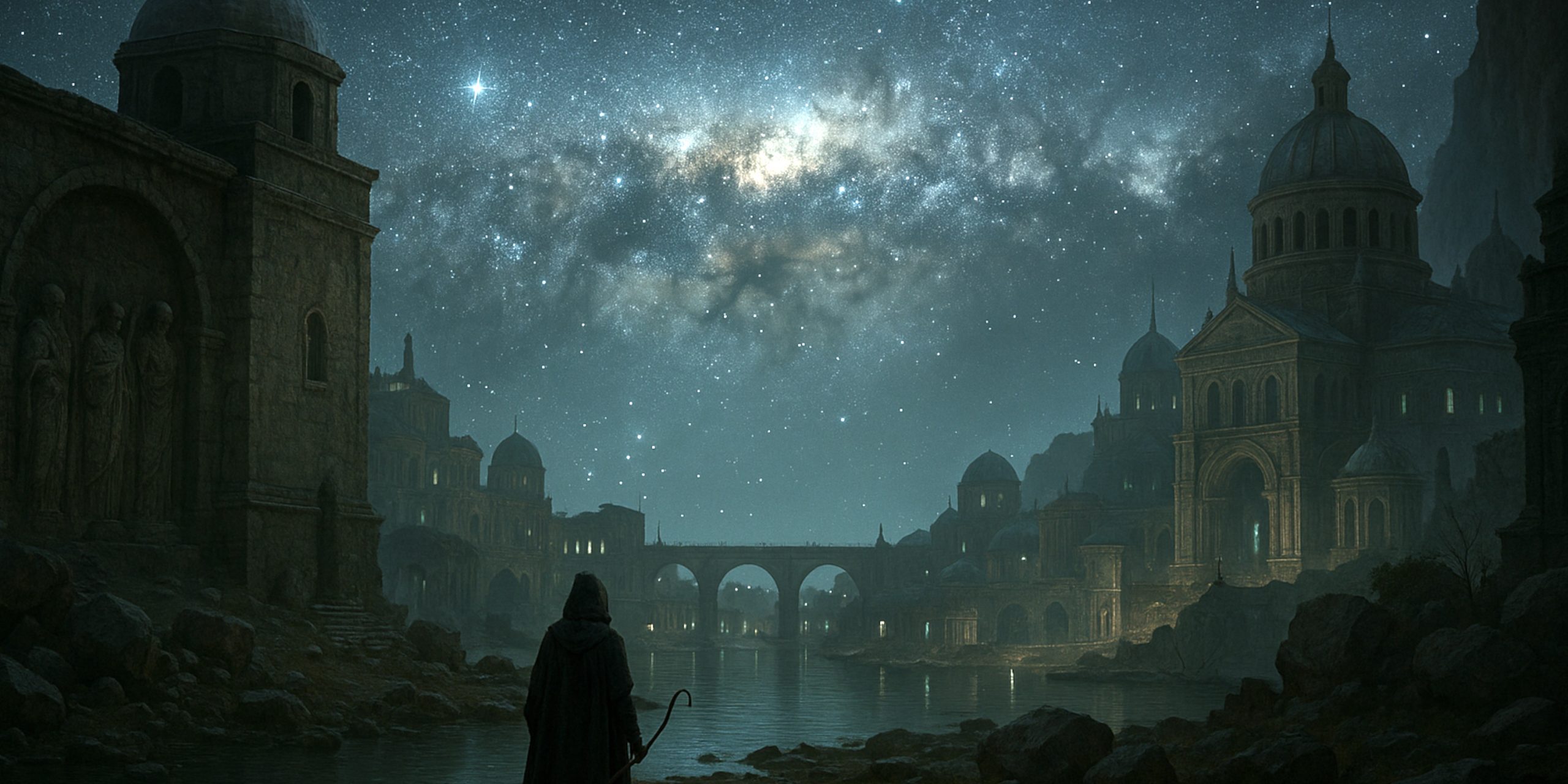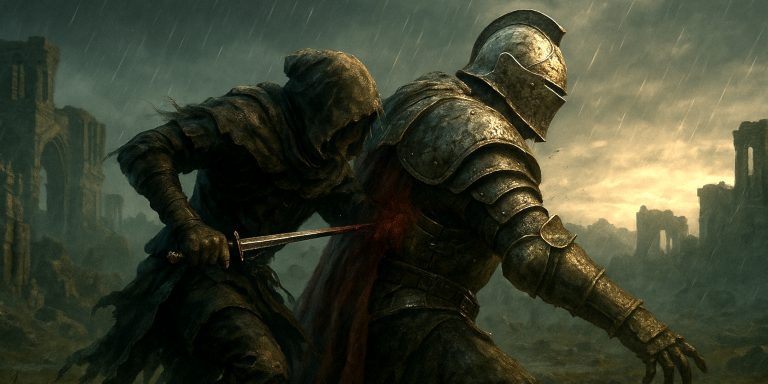
Uncovering the forgotten lore of Nokron, Nokstella, and the stars
Beneath the Lands Between lie ancient cities frozen in time. Nokron and Nokstella, known as the Eternal Cities, are the remnants of a forgotten civilisation, the Nox. Once a people who lived under the stars, they now linger in twilight, punished and abandoned by the Greater Will. Their fate is one of the most cryptic and tragic threads in Elden Ring’s lore. This article uncovers everything we know about the Nox, their war with the gods, their connection to the night sky, and the hidden truths buried deep within the game’s world.
Who Were the Nox?
The Nox were a mysterious people who once lived on the surface under the open night sky. They worshipped the stars and practised powerful and forbidden forms of sorcery. Rather than bending the knee to the Greater Will, they revered a different order, one aligned with the cosmos.
Their civilisation developed a blend of scientific arcana and astral worship. This duality shaped their entire culture, influencing both their aesthetics and their weapons. Nox constructs, automatons, and scythe-wielding warriors reflect a society that fused elegance with precision, faith with reason.
The Eternal Cities: Nokron and Nokstella
Both Nokron and Nokstella lie underground, mirroring a world that was once above. They are filled with echoes of former grandeur: ruined buildings, celestial imagery, and statues of the Nox.
- Nokron is reached after Starscourge Radahn is defeated, allowing the stars to move once more. It is silent, solemn, and bathed in ghostly light. The ruins suggest a city forcibly removed from time itself.
- Nokstella is darker, more alien. It houses strange enemies like the Nox automatons and the deadly Silver Tears, lifeforms created through experimentation with mimicry and celestial matter.
Both cities contain architecture that seems to mourn a lost age. Together, they tell a story of pride, punishment, and isolation.
The Nox and the Stars
The Nox were deeply connected to the stars and the cosmic order. They revered an entity known as the Formless Mother or the stars themselves, depending on interpretation. When they sought to challenge the Greater Will’s dominion, they summoned an “artificial star”– a creature later known as Astel, Naturalborn of the Void.
This act was their downfall. The Greater Will struck back, banishing the Nox underground as punishment. The stars they once worshipped were cut off from them, and the Eternal Cities became tombs of a civilisation exiled from the sky.
This moment reshaped the fate of the Lands Between. With the stars halted, fate itself was locked. Only when Radahn, who held back the stars with his gravity magic, was defeated did their influence return.
Astel: The Void’s Weapon
Astel, Naturalborn of the Void, was not born of the Erdtree or any earthly god. It came from beyond, summoned by the Nox as a weapon against the divine. It obliterated Nokstella and left only destruction behind.
This act symbolises the Nox’s desperation. In trying to reclaim their place in the cosmos, they unleashed a force too alien and too vast for them to control. Astel remains in the depths, guarding what is left of their ambition.
The Night Sky Returns
The player’s journey through Elden Ring restores the night sky in stages. After defeating Radahn, the stars begin to move again. This is not just visual, it’s a metaphysical shift. It allows Ranni’s path to unfold, bringing back the influence of the stars and fate that had been suspended.
The Nox, in their way, get what they wanted, though not through their own hands. Their story forms a quiet, tragic prologue to Ranni’s rebellion and her quest to usher in the Age of Stars.
Weapons, Sorceries, and Artefacts of the Nox
The Nox left behind relics of their culture:
- Nox Flowing Sword – a curved sword that shifts form mid-swing, reflecting the Nox’s flexible and elegant combat style.
- Night Comet and Night Shard – sorceries that are invisible to the eyes of the Golden Order, suggesting they were designed to strike undetected.
- Silver Tear Mask – a mimicry of humanity, drawn from the Silver Tears created in their laboratories.
These weapons and spells are linked to stealth, illusion, and elegance rather than brute force, matching the Nox philosophy of indirect resistance.
Legacy of the Nox
The Nox failed in their bid to overthrow the Greater Will, but their influence lives on. Their knowledge, their cities, and their secrets shape the player’s path even if their names are seldom spoken. They are the forgotten engineers of rebellion, the ones who reached for the stars and were cast into shadow.
Ranni’s Age of Stars, should it come to pass, can be seen as the spiritual continuation of their dream—a new order not bound by the Erdtree or the will of outer gods. In that sense, the Nox did not truly fail. They simply laid the groundwork for another to succeed.
The Seven Swords Takeaway
The story of the Nox in Elden Ring is one of ambition and exile, of secret knowledge and starless punishment. Their history is fragmented, buried in stone and sky, but it adds a rich layer of meaning to the game’s cosmic and theological landscape. While they remain trapped in time beneath the earth, their influence stretches toward the stars.



